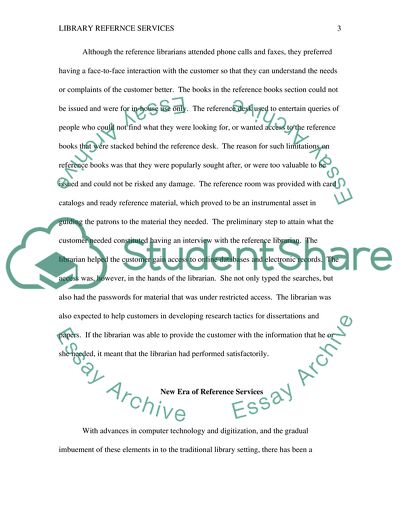Cite this document
(Library Reference Services Research Paper Example | Topics and Well Written Essays - 2000 words, n.d.)
Library Reference Services Research Paper Example | Topics and Well Written Essays - 2000 words. Retrieved from https://studentshare.org/technology/1739322-differences-and-similarites-between-traditional-forms-of-reference-services-and-those-with-new-emerging-technologies
Library Reference Services Research Paper Example | Topics and Well Written Essays - 2000 words. Retrieved from https://studentshare.org/technology/1739322-differences-and-similarites-between-traditional-forms-of-reference-services-and-those-with-new-emerging-technologies
(Library Reference Services Research Paper Example | Topics and Well Written Essays - 2000 Words)
Library Reference Services Research Paper Example | Topics and Well Written Essays - 2000 Words. https://studentshare.org/technology/1739322-differences-and-similarites-between-traditional-forms-of-reference-services-and-those-with-new-emerging-technologies.
Library Reference Services Research Paper Example | Topics and Well Written Essays - 2000 Words. https://studentshare.org/technology/1739322-differences-and-similarites-between-traditional-forms-of-reference-services-and-those-with-new-emerging-technologies.
“Library Reference Services Research Paper Example | Topics and Well Written Essays - 2000 Words”, n.d. https://studentshare.org/technology/1739322-differences-and-similarites-between-traditional-forms-of-reference-services-and-those-with-new-emerging-technologies.


